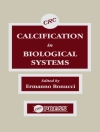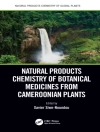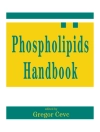This book discusses recent advances in the field of translational stroke research. The editors have designed the book to provide new insight into the importance of regeneration and repair mechanisms for stroke victims. The editors have brought together a talented group of international stroke researchers and clinicians to contribute to this volume, which is written for students, researchers and physicians in biotechnology, neurosciences, neurology, neuroradiology and neurosurgery.
Throughout the world, stroke is still a leading cause of mortality and morbidity; there are 152, 000 strokes in the United Kingdom, 62, 000 in Canada, and approximately 15 million people worldwide. Large communities of stroke survivors are eagerly awaiting scientific advances in translational stroke research related to regeneration and recovery of function that would offer new therapeutics for rehabilitation and regeneration utilizing novel stem cell and molecular-based approaches. This volume will allow the reader to undersnd the future of stroke treatment from its inception in the laboratory through to clinical trial design. The reader will learn about the recent advances made in these areas related to basic and applied stroke research and their translational potential.
Dr. Paul A. Lapchak is Professor of Neurology and Director of Translational Research in the Departments of Neurology & Neurosurgery at Cedars-Sinai Medical Center in Los Angeles CA, USA. Dr. Lapchak is an internationally recognized expert conducting translational drug development research for ischemic and hemorrhagic stroke.
Dr. John H. Zhang is Professor of Anesthesiology, Neurosurgery, Neurology, and Physiology, and Director, Center for Neuroscience Research at Loma Linda University School of Medicine, Loma Linda, CA, USA. Dr. Zhang is an internationally recognized expert working on drug development for hemorrhagic stroke.
表中的内容
Stroke- Neuroprotection, Repair & Regeneration- The Continuum of Care.- Interdisciplinary advances and potential of stem cell-based therapies for ischemic stroke.- Stem cell transplants in the aged stroke brain: microenvironment factors.- Modulating endogenous adult neural stem cells to improve regeneration in stroke brain.- Mobilization of endogenous neural stem cells to promote regeneration after stroke.- Transcriptional and genomic advances on the pathophysiology of stem cell repairment after hemorrhagic stroke.- Modulation of post-stroke plasticity and regeneration by stem cell therapy and exogenic factors.- Stem Cell-Paved Biobridge: A Merger of Exogenous and Endogenous Stem Cells toward Regenerative Medicine in Stroke.- Multi Stem and other plastic adherence cells and their effect on immunomodulation and stroke recovery.- Combined stem cell and GCSF therapy for stroke.- Marrow Stromal Cell Neurorestorative therapy of stroke.- Combination treatment of MSCs and Angelica sinensis’ for ischemic stroke.- Gene and cell therapy and cell therapy for motor and cognitive recovery after stroke.- SB623 Preclinical and Clinical Trial Experience.- Preparing for Future Stem Cell Clinical Trials.- Exosomes For Stroke.- Exosome and Mi RNA in Stroke.- Integrating Molecular, Cellular, and Systems Approaches to Repairing the Brain after Stroke.- Regeneration of Neural Network after Stroke.- Extracellular matrix protein in subarachnoid hemorrhage-induced early brain injury.- Role of Proteases in Post-stroke brain damage and repair.- The NLRP3 inflammasome: a possible therapeutic target for treatment of Stroke.- Microglial function in intracerebral hemorrhage injury and recovery.- The role of T Cells in post-stroke regeneration.- The inflammatory response and its effect on rehabilitation-induced repair processes after stroke.- Complement C3a- Shaping the plasticity of the post-stroke brain.












